
BRAZIL—Over the past few days and weeks, rumors of war, as if global conflict were an inevitable contagion bound to reach Indoamerica (South or Latin America), swirled at an uncanny, feverish pitch. The case for armed conflict has subsided only slightly.
An unspoiled, beautiful region known as Essequibo has taken center stage in a geopolitical row dating back well over a century. Its name could be mistaken for the title of almost any state, city or town, of virtually any country on the continent. Hypothetically, if one did not know better, it could be mistaken for its own country. However, for geographical and geopolitical purposes, Essequibo, a region of approximately 800,000 residents and extending 159,500 square kilometers (61,600 square miles), sits on the far west of Guyana and represents roughly two-thirds of the country’s territory.
Rumors of an incursion by Venezuelan troops into Essequibo based on the 100+-year-old dispute between Caracas and Georgetown over the mineral and oil-rich region have been hammered home by right-wing media-makers and pundits in Brazil. Some of those outlets include Os Pingos nos Is, Jovem Pan News and others.
Intended as no fluke or blip of the tongue, they point, prodigiously so, to the Brazilian state of Roraima. Like a spoke connecting the hub to a wheel’s outer circumference, Roraima’s porous borders represent a ligament that could, theoretically, facilitate an invasion of Essequibo by Venezuelan troops—if that were to happen. In other words, Brazil will not escape being dragged into a conflict hyped by the media for sure and, more probable than not, Western foreign policymakers and big oil and natural resource interests.
The added danger in insinuating a potential invasion of Venezuelan troops into Guyanese territory via Brazil’s Roraima state is the very real fact that many Venezuelan migrants are already located and continue to arrive in Roraima. Over the past five years the Brazilian government has received almost a million Venezuelan migrants, the majority of whom entered the country via Pacaraima, a municipality in Roraima. According to the Brazilian Institute of Geography and Statistics (IBGE), during the past twelve years (2010-2022), Roraima’s population increase has ranked number one among all 26 Brazilian states, rising from 450 to 636 thousand habitants (a 41.2% increase). The influx of Venezuelan migrants has been fingered as the main reason for the growth. Despite having established attendance centers as part of its Operação Acolhida (Operation Welcome), thousands of Venezuelan migrants are reported to be living on the streets of cities and towns throughout Roraima.
Taking into account the penetrable boundaries separating the three countries, manufacturing a provocative incident involving Venezuelan and Guyanese civilians or military personnel that could serve as a pretext for conflict is not a far-fetched segue. Brazil’s Minister of Defense, José Múcio Monteiro, a member of the far-right Democratic Renewal Party (PRD), stated that the Venezuelan army “will only get into Guyana—if so they do—by passing through Brazilian territory. Under no circumstance will we permit this.” That said, the gravity of right-wing media allegations, produced and repeated incessantly as if to prime sectors of the general public to such an eventuality, have left Brazilian President Luís Inácio Lula da Silva seemingly stumped, apart from a series of per usual statements. “That which we don’t want here in South America is war,” he dryly told reporters at a recent press conference.
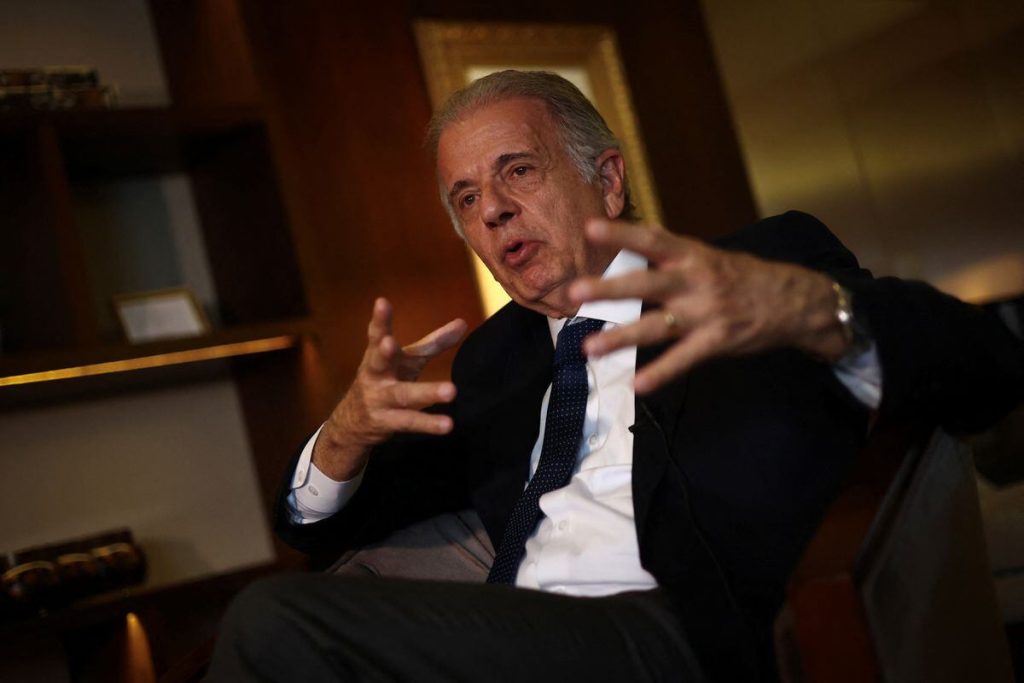
A No “Domino Effect” Army at the Ready
Brazil’s armed forces remain staunchly right-wing, indoctrinated under the 1960s mantra of preventing the “domino effect” and coming to power of a communist/left-wing government, descriptors often used to characterize Lula by his political opponents and right-wing media. Again, speaking to the press about the potential of armed conflict between Venezuela and Guyana, Lula added that his government, along with the regional Mercosul geopolitical organization, of which Brazil is a member, “are observing the situation with increased concern.”
On January 21, 2022, following the invasion of Brasília by thousands of Jair Bolsonaro supporters upset over the incumbent president’s defeat in the decisive second-round presidential vote, Lula sacked general Júlio César de Arruda as head of Brazil’s armed forces. The move, according to an unnamed source in Brazil’s military high command, caused “disaffection” within the military. Lula and his allies, however, deemed Arruda’s dismissal necessary based on the military’s inexplicable inaction when faced with hoards of protestors storming the Three Powers Plaza in Brasília and ransacking the main buildings housing the country’s executive, legislative, and judicial branches on January 8, 2022.
Four days before Lula sacked Arruda, he relieved 40 military officials of their duties as members of the Administrative Coordination team at Alvorada Palace, the official presidential residence. All but one of the country’s 27 Federal Highway Police chiefs, as well as 18 Federal Police directors, were also replaced.
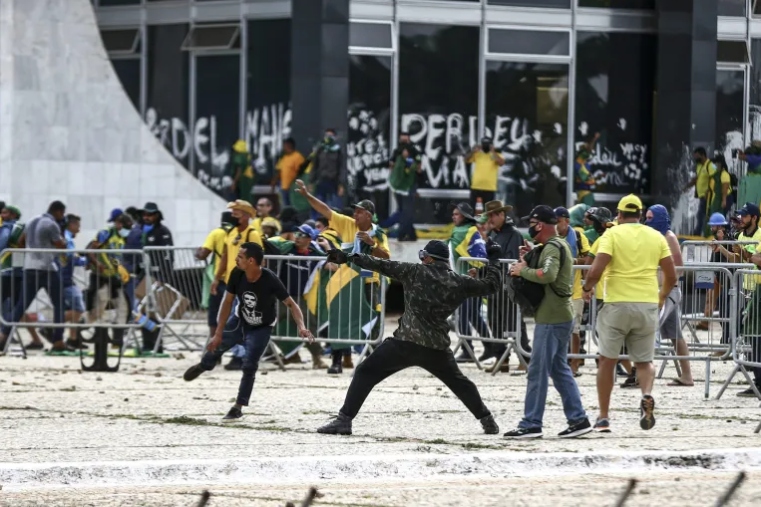
Talks to Resolve the Essequibo Dispute
Despite the corporate media’s deluge of headlines on the potential for conflict between Venezuela and Guyana, Venezuela’s Minister of Foreign Affairs, Yván Gil, held an international press conference on December 11 where he emphasized that his country is willing and prepared to find a solution whereby both countries could share the oil drilling rights and profits gained from the Essequibo region. “Venezuela is willing to seek shared development arrangements, which is precisely one of the arrangements that will be on the (negotiation) table” during roundtable discussions held on the Caribbean island of Saint Vincent and Grenadines on December 14. This first round of negotiations was brokered by Brazil, as well as the Caribbean Community (CARICOM) and Community of Latin American and Caribbean States (CELAC).
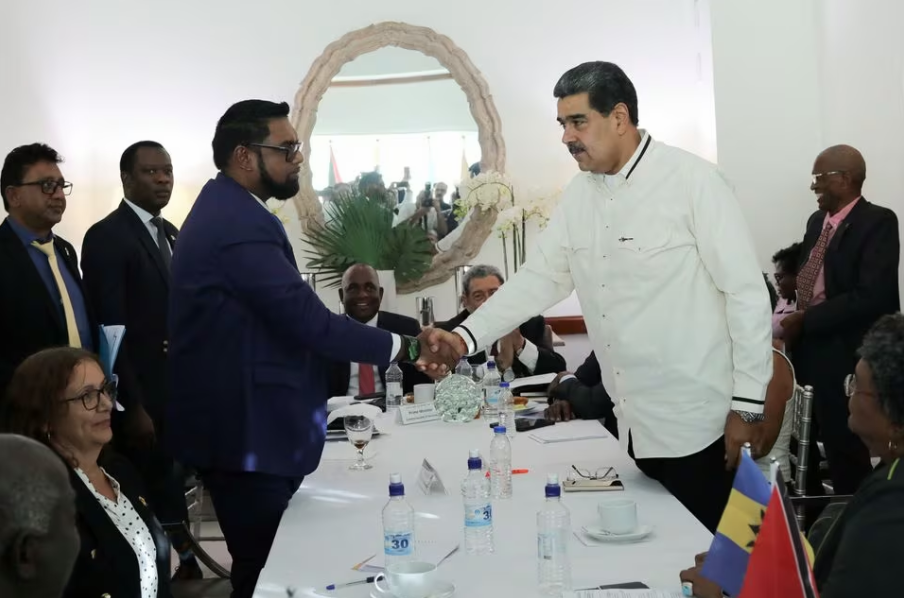
The Saint Vincent talks were the first time Venezuelan President Nicolás Maduro and his counterpart, Guyanese President Irfaan Ali, convened face-to-face since relations between the two countries further strained following the Venezuelan referendum (December 3) to determine if the country should reincorporate Essequibo into its territory. After the meeting concluded and without going into details of the discussions, Ali posted on social media that both heads of state “are committed to peace in this region. The #ICJ will determine, finally, the controversy in the Guyana/Venezuela borders. We are uncompromising on this and the respect for International law. We have made it clear we are unopposed to conversations and meetings as responsible people and country.”
The meeting also concluded with a joint statement signed between the two countries noting that “Under no circumstances will Guyana and Venezuela directly or indirectly threaten each other or use force against each other,” as it relates to the disputed Essequibo region. “The
Parties express their commitment to good neighbourliness, peaceful coexistence and the unity of Latin America and the Caribbean.”
A Brief Background
Essequibo was incorporated into Venezuela following its independence from Spain in 1811. To the east of Venezuela were the Guyanas, carved up settler colonies ruled by the Netherlands, France, and ultimately Britain.
Prior to British governance of present-day Guyana, the territory was colonized by the Dutch. In 1814, Britain purchased Guyana from the Netherlands, renaming the country British Guiana. The new settler colony, however, never established its western border with recently independent Venezuela. Decades later, British colonial officials contracted Robert Schomburgk, a diplomat and what could only be described as a settler colonial land surveyor, to outline the country’s western border on behalf of the royal crown. Schomburgk’s cartographic delineations added 800,000 square kilometers (498,000 square miles), otherwise, the Essequibo region, to British Guiana. With errant seeds planted, disputes between Guyana and Venezuela over the territory have persisted ever since.
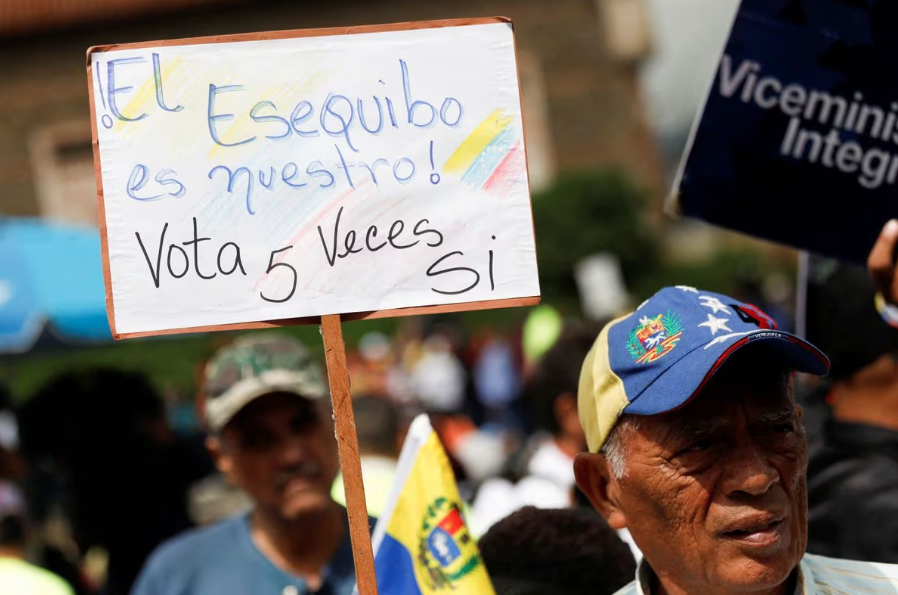
Brazil on High Alert
Regional armed conflict of any sort, much less war, is something Lula cannot afford at such a delicate moment in his third presidential term. Faced with an overwhelming majority opposition seated in Brazil’s senate and congress, a mainstream media apparatus dedicated to daily slanders against him, an internal security crisis marked by elevated incidents of violence, having survived an invasion of Brasília by hardcore Bolsonaro supporters, and having to manage a geopolitical seesaw in the region, most recently embodied by Argentina’s new president, Javier Milei, Lula now balances himself on more eggs than he ever knew during his first two presidential terms. As Fernando Cássio, professor at the Federal University of ABC, puts it, “The government balances more plates than it should considering that its main base is not in this upper class that only came to its side for convenience.”
Speaking to this lack of ideological like-minded forces in Brazil’s parliament, Lula stated, “We will speak with everybody that has a vote in the National Congress because in order to approve policies needed, we need those votes. The PT [Workers’ Party], alone, doesn’t have enough votes. The PT and the left do not have enough votes.”
Even Lula’s voice sounds noticeably different. No longer is it just his raspy baritone but now a peculiar flutter now pervades his speech. Such was the case when he called for “common sense” to prevail between Guyana and Venezuela’s dispute over Essequibo.
Necessary Mediation
Staunch pragmatism, not catwalks at the ideological fashion show, guides Lula’s administration and policy proposals related to sectors such as education, sanitation, healthcare, climate policies and preserving the Amazon, and the economy. Still, many of those base proposals have encountered heavy resistance and defeats by the legislative branch.
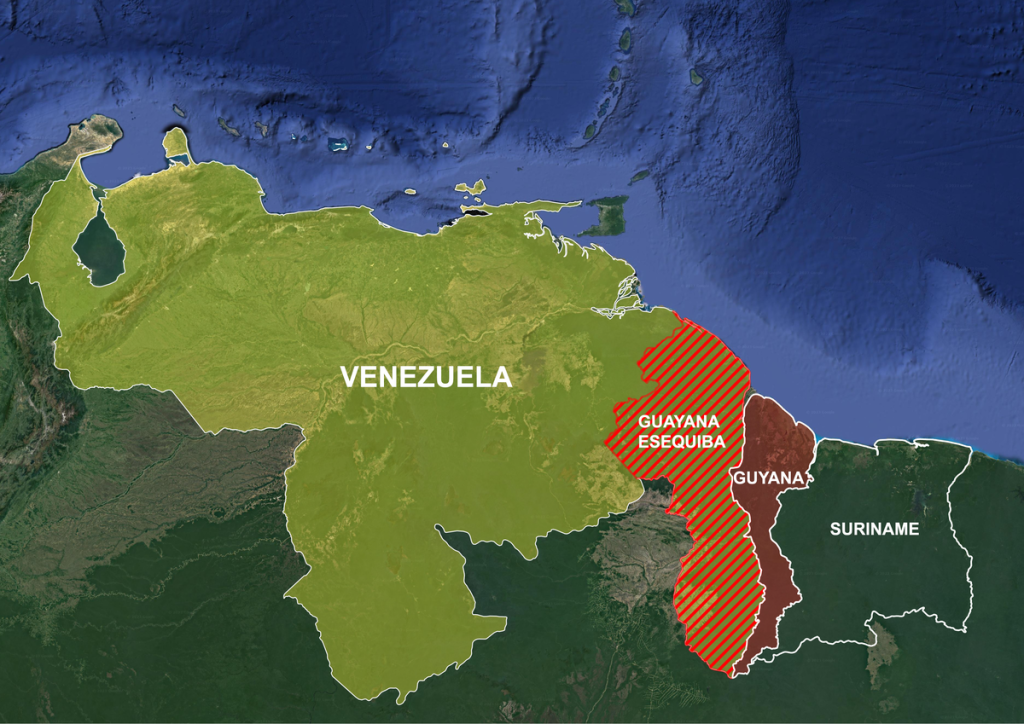
Essequibo now tops Lula’s agenda. The ground of this neighboring territory, where the U.S. Southern Command recently conducted joint military flight operations with Guyana’s armed forces on December 7, contains immense amounts of oil and mineral wealth. In 2015, ExxonMobil struck black gold in Essequibo, a find which one executive described as a “fairy tale” discovery. At the time, it was estimated that 11 billion barrels of oil lay off the Essequibo coast, so much that, theoretically, Guyana could potentially produce more crude per citizen than any other country on Earth, radically improving the living standards of its citizenry.
Then, on December 3, Guyanese officials announced that there was a “significant” new oil discovery off the shores of Essequibo and that they had green-lighted licensing bids to eight companies, foreign and national, to drill for crude. This new oil find increased the country’s oil-producing potential from 11 billion to as high as 25 billion oil-equivalent barrels.
Ever-Growing Troubles in the Region
Despite the slight easing of sanctions against the Chavista government, the U.S. Embassy in Guyana released a statement reiterating its continued “commitment as Guyana’s trusted security partner and promoting regional cooperation and interoperability.
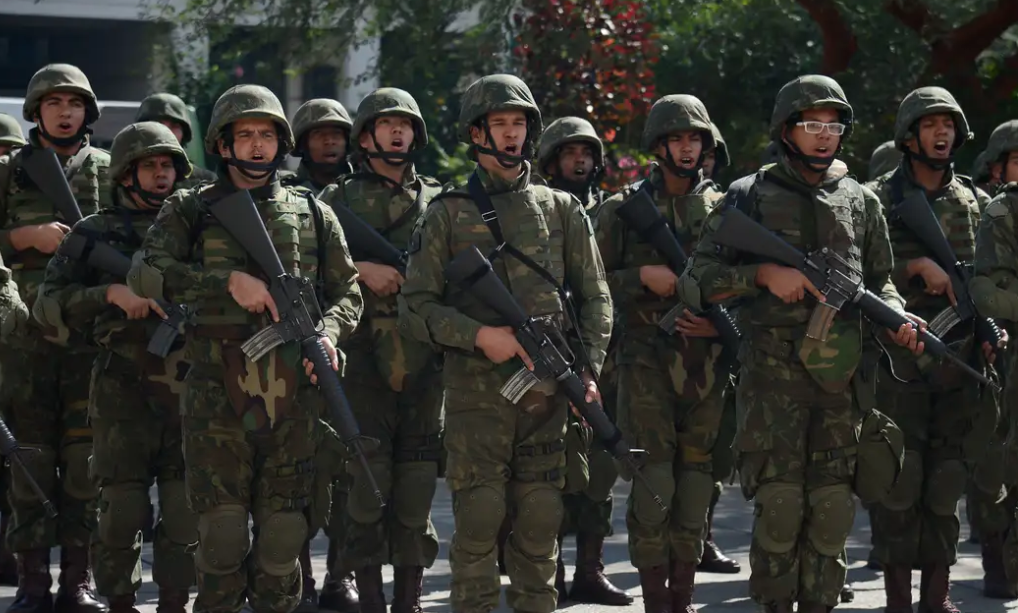
Lula has ordered the mobilization of troops along Brazil’s northern borders with Venezuela and Guyana. By reinforcing its presence in the region, Brazil’s army intends to “guarantee the inviolability of the territory.” Likewise, Venezuela has mobilized its military along the country’s eastern border and Guyana has put its armed forces on high alert.
However the events unfold, and whatever the outcome, Brazil’s proximity to the flashpoint of potential conflict means that the South American giant, to one degree or another, like it or not, will also bear responsibility in dealing with this hot mess.

CovertAction Magazine is made possible by subscriptions, orders and donations from readers like you.
Blow the Whistle on U.S. Imperialism
Click the whistle and donate
When you donate to CovertAction Magazine, you are supporting investigative journalism. Your contributions go directly to supporting the development, production, editing, and dissemination of the Magazine.
CovertAction Magazine does not receive corporate or government sponsorship. Yet, we hold a steadfast commitment to providing compensation for writers, editorial and technical support. Your support helps facilitate this compensation as well as increase the caliber of this work.
Please make a donation by clicking on the donate logo above and enter the amount and your credit or debit card information.
CovertAction Institute, Inc. (CAI) is a 501(c)(3) non-profit organization and your gift is tax-deductible for federal income purposes. CAI’s tax-exempt ID number is 87-2461683.
We sincerely thank you for your support.
Disclaimer: The contents of this article are the sole responsibility of the author(s). CovertAction Institute, Inc. (CAI), including its Board of Directors (BD), Editorial Board (EB), Advisory Board (AB), staff, volunteers and its projects (including CovertAction Magazine) are not responsible for any inaccurate or incorrect statement in this article. This article also does not necessarily represent the views the BD, the EB, the AB, staff, volunteers, or any members of its projects.
Differing viewpoints: CAM publishes articles with differing viewpoints in an effort to nurture vibrant debate and thoughtful critical analysis. Feel free to comment on the articles in the comment section and/or send your letters to the Editors, which we will publish in the Letters column.
Copyrighted Material: This web site may contain copyrighted material the use of which has not always been specifically authorized by the copyright owner. As a not-for-profit charitable organization incorporated in the State of New York, we are making such material available in an effort to advance the understanding of humanity’s problems and hopefully to help find solutions for those problems. We believe this constitutes a ‘fair use’ of any such copyrighted material as provided for in section 107 of the US Copyright Law. You can read more about ‘fair use’ and US Copyright Law at the Legal Information Institute of Cornell Law School.
Republishing: CovertAction Magazine (CAM) grants permission to cross-post CAM articles on not-for-profit community internet sites as long as the source is acknowledged together with a hyperlink to the original CovertAction Magazine article. Also, kindly let us know at info@CovertActionMagazine.com. For publication of CAM articles in print or other forms including commercial internet sites, contact: info@CovertActionMagazine.com.
By using this site, you agree to these terms above.
About the Author
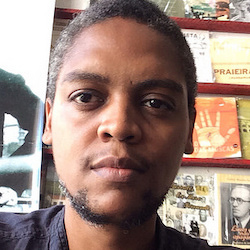
A former editor-at-large for African Stream and ex-staff writer at Telesur, Julian Cola is publishing a memoir of intimate, community-inspired stories titled “Proibidão (Big Prohibited): Off-Grid Correspondence From Brazil & Ecuador.”
The pre-launch is in December 2025. It includes media beefs and, having taught in the teaching-English-industrial-complex, the book discusses linguistic soft-power in the region and creative ways of dealing with it as mentioned in the essay, Listening To 2Pac In The Andes (Kawsachun News).
For more information contact: traducoessemfronteiras@protonmail.com











Wars in Ukraine, Gaza, and Yemen; terror attack in Iran, a failed coup in Serbia, now threats of armed conflict in South America. Waves of violence spreading across the globe as a virus spreads its disease, makes one wonder if there is more to the comparison than just mere analogy and not an actual pathogen of the human psyche that is responsible for recurring cycles of global epidemics of mass psychosis leading to outbreaks of collective violence. Whatever the case may be the worldwide rattling of sabers is growing ever louder with each passing moment; we’ve seen it happen before, only now we have the capability to be the authors of our species full extinction if we fail to realize how quickly events are spiraling out of control.